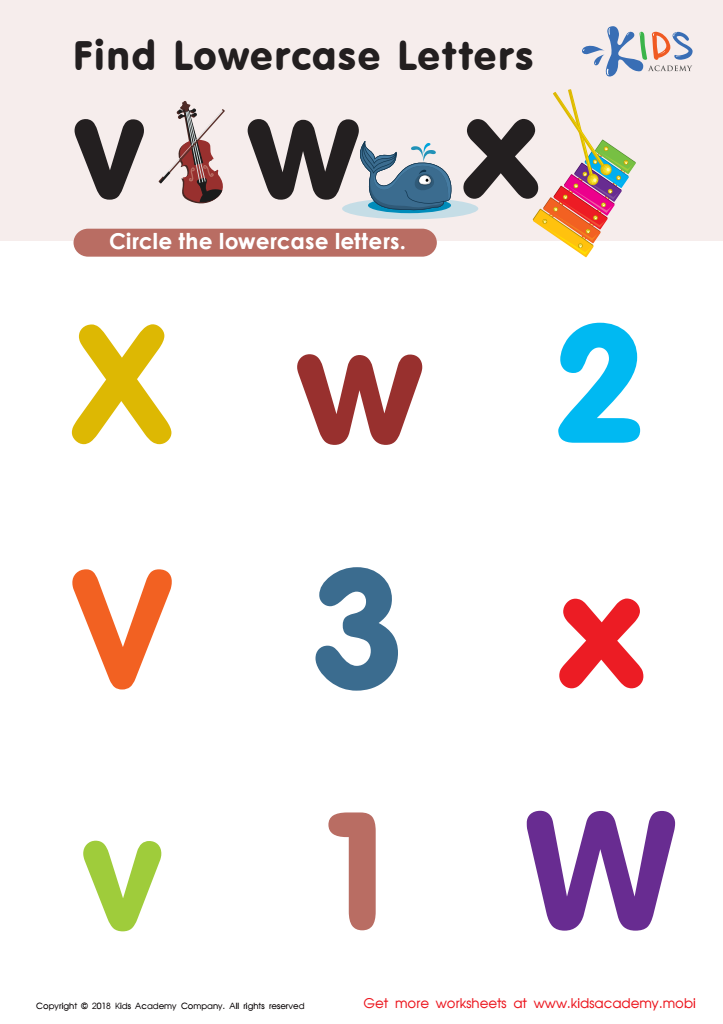Lowercase identification Normal Lowercase/Small Letters Worksheets for Ages 4-9
4 filtered results
-
From - To
Our "Lowercase Identification Normal Lowercase/Small Letters Worksheets" are designed for children ages 4-9, aiming to enhance their early literacy skills. These engaging worksheets focus on recognizing and identifying lowercase letters, fostering a strong foundation in reading and writing. Each activity features vibrant illustrations and fun exercises that captivate young learners, making learning an enjoyable experience. Ideal for use at home or in the classroom, these resources support various educational milestones, including alphabet recognition and phonemic awareness. Empower your child’s literacy journey with our expertly crafted worksheets, tailored to nurture confident and proficient readers. Download now for enriching practice!


Find Lowercase Letters d e f Worksheet


Find Lowercase Letters y z Worksheet


Find lowercase letters a b c Worksheet


Find Lowercase Letters v w x Worksheet
Parents and teachers should care about identifying lowercase letters for children aged 4-9 because early literacy development is crucial during these foundational years. The ability to recognize and distinguish lowercase letters forms the bedrock for reading and writing proficiency, skills vital for all future academic success and communication.
Lowercase letters appear more frequently in texts than uppercase letters, meaning proficiency in recognizing them directly impacts a child's ability to read fluently. Mastery of lowercase letters enables children to decode words more efficiently, promoting early reading skills and fostering a love for reading. Early competency in this area can prevent future reading difficulties and boost overall confidence in literacy.
Moreover, understanding lowercase letters aids in proper word writing. Since children learn to write by copying the texts they read, knowing lowercase letters ensures their writing aligns with standard conventions, improving legibility and communication.
Furthermore, developing such skills at ages 4-9 aligns with critical cognitive development stages, where children’s brains are highly receptive to learning new languages and symbols. Teachers and parents who actively support this skill build a strong educational foundation, empowering children to succeed academically and confidently navigate a text-rich world. By nurturing lowercase letter identification, we open doors to lifelong learning and academic achievement.

 Assign to My Students
Assign to My Students










